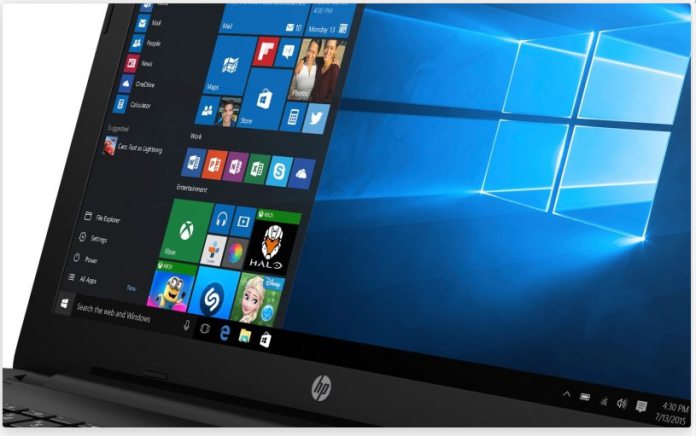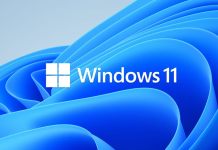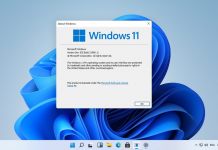Whether this means Microsoft will issue cumulative patches twice per month consistently or this is a one off remains to be seen. Either way, at least this month users are being taken care of. As always, these updates to not include any new features or abilities for Windows 10. Instead, their focused on shoring up the platform from problems. There’s a lot to get through, so we will start with the Creators Update. If you are running the latest Windows 10 version, you’ll see build 15063.447 (KB4022716). It is available from the Microsoft Update Catalog and below is the changelog:
Addressed an issue introduced by KB4022725 where Internet Explorer and Microsoft Edge printing from a frame may result in 404 not found or blank page printed. Addressed issue where network printers may fail to install when using the printer vendor’s setup software on machines with less than 4 GB of RAM. These printers will install properly if you install using the Settings app or from Devices and Printers in Control Panel. Addressed issue that causes high memory usage for the Camera app on mobile platforms, which reduces battery life. Any app that uses a media capture element (MCE) or media element (ME) and plays 1080p will consume a lot of power, which will significantly reduce battery life. Addressed issue where, after updating to the Creators Update, devices that have Receive Segment Coalescing (RSC) enabled have significantly low wireless throughput. Addressed issue (Error 0x7F) with Windows Forms (WinForms) that causes the system to crash after upgrading to the Creators Update. Addressed issue that prevents users from connecting to the Terminal Services Gateway (TSG) running on Windows Server 2008 SP2 after upgrading to the Creators Update. As a result, users cannot access Remote Desktop Services or remote apps. Addressed issue where, if you specify an auto-logon configuration in Unattend.xml, auto-logon only works on the first logon, but will not work again when the device is restarted. Addressed issue where users cannot sign in with Face after upgrading to Windows 10 RS2. Addressed issue where, after upgrading to Windows 10 RS2, modem dial-up fails with Error 633. Addressed issue where the smartcard service (sccardsvr.exe) stops periodically and never restarts when the smart card application attempts to access the cards. Addressed issue where, when a laptop connected to an ISCSI disk leaves the corporate network, an error may occur when it resumes if it does not connect to the VPN fast enough. Addressed issue where a remote desktop connection with Windows 2016 RDS server fails authentication when using smartcards. Addressed issue where Open Mobile Alliance (OMA) Device Management (DM) uses the wrong interface to index the on-demand APN. Addressed issue with a memory leak in the camera platform across all devices for PC (MIPI and USB cameras). Addressed issue where, if the device lid close action was set to “Do Nothing”, closing and re-opening the lid causes all Universal Windows Platform apps to stop responding. Addressed issue with failed login scenarios that occur because the device does not reconnect to the host PC. Addressed issue where users must wait between 40 to 60 minutes after a print spooler restart before attempting to change any printer settings. Addressed issue where the cursor type does not maintain the arrow shape when the user mouses over a select option in Internet Explorer. Addressed issue where searching for a string on a page that has many iframes causes Internet Explorer to stop working. Addressed issue where Internet Explorer stops responding when a user clicks on an empty column header and then immediately holds down the SHIFT key and double clicks. Addressed issue where the onhashchange event is not called when navigating hashed URLs in Internet Explorer. Addressed issue to improve pairing, connecting, synchronizing, and notifications experiences for a third-party wearable device. Addressed issue to improve Bluetooth connectivity to wearable devices. Addressed issue where the NewWindow3 event is not called in Internet Explorer. Address issue with a memory leak that occurs when calling BluetoothGATTRegisterEvent() and BluetoothGATTUnregisterEvent() functions for an NFC card reader. Addressed issue where a clear (x) button inside HTML text fields cannot be disabled using the ::ms-clear attribute when Document Modes are less than 10 in Internet Explorer 11. Addressed issue where Internet Explorer 11 would fail to load HTML page after installing KB3021952. Addressed issue where a Windows Phone experiences data loss (email, contact, SMS, etc.) caused by Unistore database corruption. Addressed issue where guest VMs bound to a wireless NIC can lose network connectivity if the guest does not send an Address Resolution Protocol (ARP) packet in the fixed timeout window (5 minutes). Addressed issue where certain elements (input or select) cannot be active targets of any action in Internet Explorer 11. This occurs after removing an iframe that contained a cursor inside certain elements (input or select) and then adding a new iframe. Addressed issue with NVIDIA drivers that stop working (Error 0x9f) when the system goes to sleep. This also causes a shutdown of Microsoft Surface Hubs. Addressed issue to improve Remote Desktop Protocol connections to an RD Gateway configured for RPC over HTTP. Addressed issue with non-UWP applications calling into Windows.Devices.Bluetooth API’s to register callbacks or Async operations. Addressed issue with an NFC driver that becomes non-functional because of improperly tracked timer handles. Addressed issue with Centennial apps that fail if they try to use the Payment Request API. Addressed issue where the Disk Cleanup and the Storage Settings tool remove files from system32 when file paths exceed the MAX_PATH size; as a result, the machine cannot be booted. Addressed issue to set the default cellular data roaming setting to “Don’t roam” when upgrading to Windows 10 Version 1703. Addressed issue that lead to the loss of functionality on certain third-party network adapters after upgrading to Windows 10 Version 1703.
Anniversary Update
As the Creators Update is rolling out in stages, there are still millions of Windows 10 users back on the Anniversary Update. That build has also received a cumulative update with the following changes:
Addressed an issue introduced by KB4022715 where Internet Explorer and Microsoft Edge printing from a frame may result in 404 not found or blank page printed. Addressed issue where CRM UI may hang when pressing the reply button in mail workflow. Addressed issue where the Volume Activation Services tool (vmw.exe) stops working with error “Indicates two revision levels are incompatible“ when attempting to activate the Volume License Service role. Addressed issue where multipath I/O does not use other available paths during a failover scenario. Addressed issue where a PC randomly crashes after a user inserts a USB device into the USB port. Addressed issue where a blue screen and the “unmountable_boot_volume” message appear during the system boot process when the Unified Write Filter is enabled. Addressed issue where a computer stops working when trying to add a phone to the computer for use as a modem. Addressed issue where Simple Network Management Protocol (SNMP) applications stop receiving traps. Addressed issue where Page faults for Demand Zero Pages are significantly slower (> 10%), which causes many applications to run slower. Addressed issue with error that occurs when users sign out from an application when Active Directory Federation Services is enabled. Addressed issue where nodes fail to join a cluster because of failed certificate authentication if SHA1 is disabled. Addressed issue with the Server Message Block Bandwidth limiting feature not working. Addressed issue where the storage replication driver (wvrf.sys) is in an infinite loop. Addressed issue where a 2012 R2 or below Remote Desktop License Server causes the 2016 Remote Desktop Services Host to crash and stop giving sessions to clients. Addressed issue to add support in certutil.exe to allow certificate templates to be marked for Windows Hello. Addressed issue where you may lose access to storage disks when there are still available paths if there is an error on one of the multipath I/O paths. Addressed a WS-Federation sign-out problem where users initiate Sign-out from an application configured with SAML. In this case the Sign-out fails with an ADFS exception identified with an ADFS Admin Event 364 Error. This issue is limited to ADFS 4.0. Addressed issue where the creation of virtual disks fails in Windows Server 2016 storage spaces when the physical disk allocation is set to manual for all the selected disks. Addressed additional issues in printing, updates to the Access Point Name (APN) database, Start menu and taskbar, Internet Explorer and the Windows Shell.




